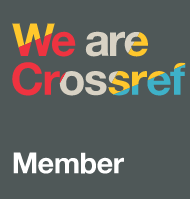The effectiveness of photomindset learning media based on discovery learning to enhance EFL student's critical thinking
Abstract
Keywords
Full Text:
PDFReferences
Akihary, W., Maruanaya, R. F., Lestuny, C., & Maruanaya, S. P. (2023). The YouTube-assisted Discovery Learning Model: Improving Students’ Cognitive Learning Outcomes and Critical Thinking. Journal of Education and Learning, 17(4), 548–554. https://doi.org/10.11591/edulearn.v17i4.20851
Azizah, N., Mahanal, S., Zubaidah, S., & Setiawan, D. (2020). The effect of RICOSRE on students’ critical thinking skills in biology. AIP Conference Proceedings, 1–6. https://doi.org/10.1063/5.0000562
Brown, H. D. (2004). Language assessment: Principles and Classroom Practices. In Longman. New York
Chusni, M. M., Saputro, S., Rahardjo, S. B., & Suranto, S. (2021). Student’s Critical Thinking Skills Through Discovery Learning Model Using E-Learning on Environmental Change Subject Matter. European Journal of Educational Research, volume-10-(volume-10-issue-3-july-2021), 1123–1135. https://doi.org/10.12973/eu-jer.10.3.1123
Dewanthikumala, D., Jasruddin, J., & Abdullah, H. (2021). Analysis of Critical Thinking Skills Based on Learning Motivation, Responsibility, and Physics Learning Discipline of Senior High School Students in Takalar. Journal of Physics: Conference Series, 1805, 1–9. https://doi.org/ 10.1088/1742-6596/1805/1/012004
Dogani, B. (2023). Active learning and effective teaching strategies. International Journal of Advanced Natural Sciences and Engineering Researches, 7(4), 136–142. https://doi.org/10.59287/ijanser.578
Ferdiansyah, S., Widodo, H. P., & Elyas, T. (2020). Photovoice in The English as An Additional Language (EAL) Writing Classroom: No Need to Rush to Love Writing because Love Will Grow with Time. Journal of Asia TEFL, 17(1), 269–279. https://doi.org/10.18823/asiatefl.2020.17.1.19.269
Habibzadeh, F. (2024). Data Distribution: Normal or Abnormal? Journal of Korean Medical Science, 39(3), 1–8. https://doi.org/10.3346/jkms.2024.39.e35
Haffejee, F. (2021). The Use of Photovoice to Transform Health Science Students into Critical Thinkers. BMC Medical Education, 21(1), 1–10. https://doi.org/10.1186/s12909-021-02656-1
Hammer, D. (1997). Discovery Learning and Discovery Teaching. Cognition and Instruction, 15(4), 485–529. https://doi.org/10.1207/s1532690xci1504_2
Harahap, T. R., Sari, S. M., Mahrani, & Emilia, L. (2023). Imporving The Students’ Skill in Writing Descriptive Text Using Animated Short Film to the Eleventh Grade Students Of SMA Negeri 6 Padangsidimpuan. Anglo-Saxon : Jurnal Ilmiah Program Studi Pendidikan Bahasa Inggris, 13(1), 41–55. https://doi.org/10.33373/as.v14i1.5538
Jayanti, I. A. M. T. D. (2021). The Use of Discovery Learning in Improving Students ’ Critical Thinking Ability ( A Literature Review ). The Art of Teaching English as a Foreign Language, 2(1), 13–17. https://doi.org/10.36663/tatefl.v1i2. 100
Mislia, T. S., Indartono, S., & Mallisa, V. (2019). Improving Critical Thinking among Junior High School Students through Assessment of Higher Level Thinking Skills. Advances in Social Science, Education and Humanities Research, 323, 326–333. https://doi.org/10.2991/icossce-icsmc-18.2019.58
O’Reilly, C., Devitt, A., & Hayes, N. (2022). Critical thinking in the preschool classroom - A systematic literature review. Thinking Skills and Creativity, 46(August), 1–20. https://doi.org/10.1016/j.tsc.2022.101110
Pohan, A. E. (2020). An Experimental Study of an Attempt in Improving the Students’ Writing Skills. ANGLO-SAXON: Jurnal Ilmiah Program Studi Pendidikan Bahasa Inggris, 11(2), 223–236. https://doi.org/10.33373/as.v11i2.2776
Rahayu, M. S. I., & Kuswanto, H. (2021). The effectiveness of the use of the android-based carom games comic integrated to discovery learning in improving critical thinking and mathematical representation abilities. Journal of Technology and Science Education, 11(2), 270–283. https://doi.org/10.3926/JOTSE.1151
Riswanto, Heydarnejad, T., Saberi Dehkordi, E., & Parmadi, B. (2022). Learning-oriented assessment in the classroom: the contribution of self-assessment and critical thinking to EFL learners’ academic engagement and self-esteem. Language Testing in Asia, 12(1), 1–21. https://doi.org/10.1186/s40468-022-00210-4
Rosmawanty, F. R. D., & Abdulrahman, T. R. (2021). Photovoice as A Participatory Learning Method in Writing. TRANS-KATA: Journal of Language, Literature, Culture and Education, 1(2), 124–137. https://doi.org/10.54923/transkata.v1i2.14
Setiawati, G. A. D. (2023). Using Photovoice Method in Elementary Natural Science Learning. International Journal of Instructions and Language Studies, 1(1), 13–22. https://doi.org/10.25078/ijils.v1i1.2476
Sugiyono. (2022). Metode Penelitian Kuantitatif, Kualitatif dan R&D. In Alfabeta. Bandung
Vana, E., & Nurhaeni. (2024). The Effect of Discovery Learning Method on Students’ Reading Comprehension. Eduvelop: Journal of English Education and Development, 7(2), 118–123. https://doi.org/10.31605/eduvelop.v7i2.2761
Wang, C., & Burris, M. A. (1997). Photovoice: Concept, Methodology, and Use for Participatory Needs Assessment. Health Education & Behavior, 24(3), 369–387. https://doi.org/10.1177/109019819702400309
Wang, T. (2020). Using Photovoice as Methodology, Pedagogy and Assessment Tool in Education: Graduate Students’ Experiences and Reflections. Beijing International Review of Education, 2(1), 112–135. https://doi.org/10.1163/25902539-00201008
Widyapuraya, N. W., Suryana, A. L., Suyanta, S., & Wilujeng, I. (2023). Profile of Critical Thinking Skills of Junior High School Students. Jurnal Penelitian Pendidikan IPA, 9(3), 1368–1374. https://doi.org/10.29303/jppipa.v9i3.1723
Yanti, F., Saragih, F. A., & Subrata, D. (2023). The Influence of Rainbow Scrapbook Learning Media on Student Learning Motivation. Jurnal Cahaya Pendidikan, 9(1), 88–96. https://doi.org/10.33373/chypend.v9i1.5069
Yazdani, H., & Sadeghi, M. (2022). A Comparative Study on the Effects of Digitally Self-regulated and Guided Discovery Learning Instructions on EFL Learners’ Vocabulary Acquisition. Applied Research on English Language, 11(4), 25–45. https://doi.org/10.22108/ARE.2022.130942.1792
Yulianta, A. G. (2021). Penerapan Model Discovery Learning dalam Upaya Peningkatan Prestasi Belajar IPS Siswa SMP. Jurnal Cahaya Pendidikan, 7(1), 1–11. https://doi.org/10.33373/chypend.v7i1.3057
Zare, M., Barjesteh, H., & Biria, R. (2021). Enhancing EFL Learners’ Reading Comprehension Skill through Critical Thinking-Oriented Dynamic Assessment. Teaching English Language, 15(1), 189–214. https://doi.org/10.22132/TEL.2021.133238
DOI: https://doi.org/10.33373/chypend.v11i1.6751
Refbacks
- There are currently no refbacks.

This work is licensed under a Creative Commons Attribution-NonCommercial-ShareAlike 4.0 International License.
Copyright (c) 2018 Universitas Riau Kepulauan

Ciptaan disebarluaskan di bawah Lisensi Creative Commons Atribusi 4.0 Internasional.















